Werth, S., Reynisdóttir, S., Guðmundsson, H. & Andrésson, Ó. S. 2016. A fast and inexpensive high-throughput protocol for isolating high molecular weight genomic DNA from lichens. — Herzogia 29: 610–616. Isolating high molecular weight DNA as required for genomic library preparations and other applications is a challenging task. We optimized a glass-fiber column-based, high throughput DNA isolation protocol to yield comparatively large quantities of high molecular weight, pure DNA; cell lysis based on a CTAB buffer was followed by centrifugation to remove cell debris, binding to a glass-fiber membrane under high concentration of a chaotropic salt (guanidine hydrochloride), followed by two 70 % ethanol washes and elution. This method was utilized successfully on several species of lichenized ascomycetes and on two non-lichenized basidiomycetes. Thus, while developed for lichens, the method is suitable for a range of fungal taxa.
Höfundur: hilduryr@matis.is
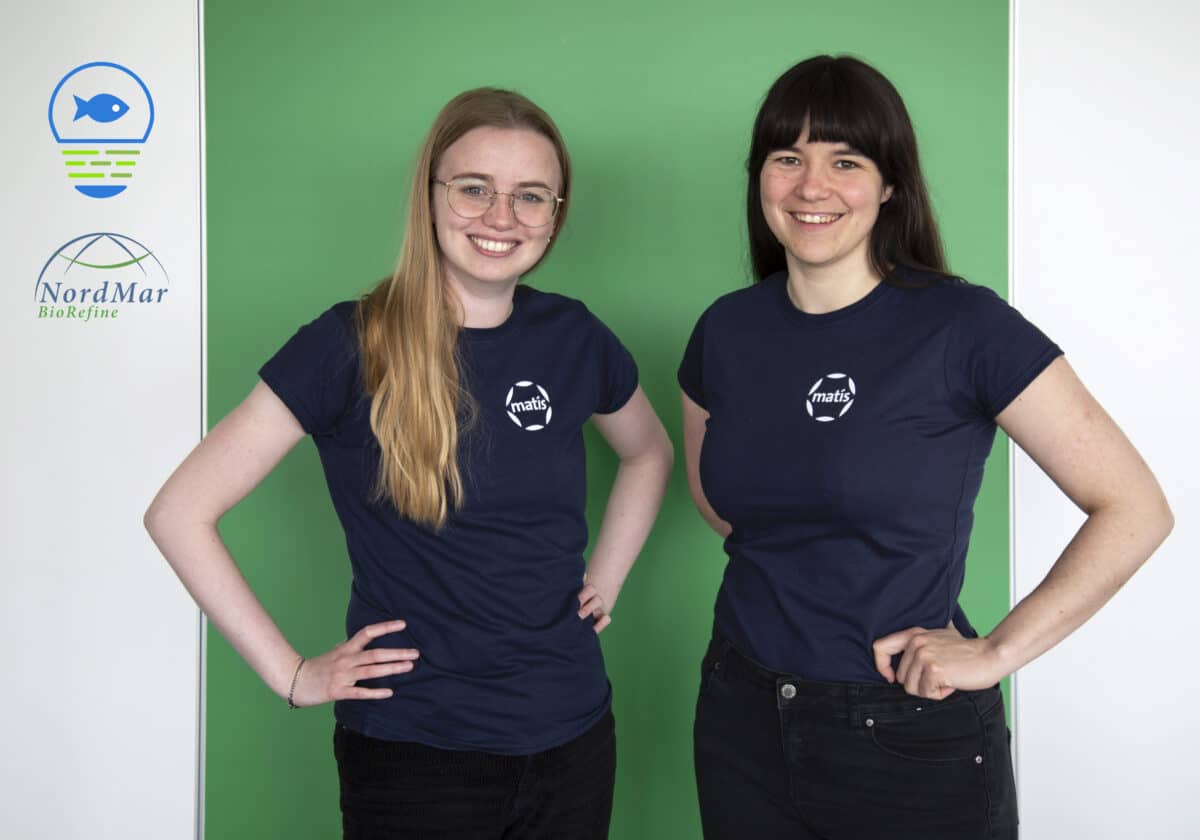
Grænir frumkvöðlar framtíðar (GFF) er fræðsluverkefni hjá Matís sem ætlað fyrir nemendur í efstu bekkjum grunnskóla og framhaldsskóla. Markmiðið er að fræða nemendur um áhrif loftslagsbreytinga á hafið og lífríki þess, sjálfbærni og nýsköpun á nýstárlegan og skemmtilegan hátt. Verkefnið er opið öllum skólum landsins og hefur Matís opnað fyrir skráningar fyrir skólaárið 2022-2023.
Verkefnið fer fram í skólum undir leiðsögn kennara og hægt er að staðfæra verkefnin eftir þörfum hvers og eins skóla. Verkefninu er skipt í fjórar vinnustofur, vettvangsheimsóknir og MAKEathon. Vinnustofurnar innihalda fræðilega umfjöllun og verkefni, vettvangsheimsóknirnar eru í sjávarútvegsfyrirtæki og MAKEathonið er nýsköpunarkeppni
Við hvetjum áhugasama kennara og skóla til að skrá sig til leiks fyrir skólaárið 2022-2023. Skráning er ekki bindandi og því mega þeir sem eru forvitnir endilega skrá sig líka. Einnig er hægt að hafa samband við verkefnastjóra verkefnisins Justine Vanhalst í netfang justine@matis.is ef einhverjar spurningar vakna. Þú finnur Græna frumkvöðla framtíðar einnig á heimasíðunni graenirfrumkvodlar.com og inn á instagram.
Rafrænn upplýsingafundur verður haldinn þann 18. ágúst næstkomandi, klukkan 13-13:30, þar verður farið yfir alla fleti verkefnisins og fólki gefinn kostur á að spyrja spurninga, nánari upplýsingar um fundinn eru sendar við skráningu.
Skráning fer fram með því að smella á skráningarhnappinn hér að neðan:
Hér má sjá stiklu frá sjónvarpstöðinni N4 um Græna frumkvöðla framtíðar, þátturinn kemur út síðar í haust.
Langar þig að lesa meira um Græna frumkvöðla framtíðar? Hér fyrir neðan er viðtal við Katrínu Huldu Gunnarsdóttur sem hefur unnið að verkefninu frá upphafi:
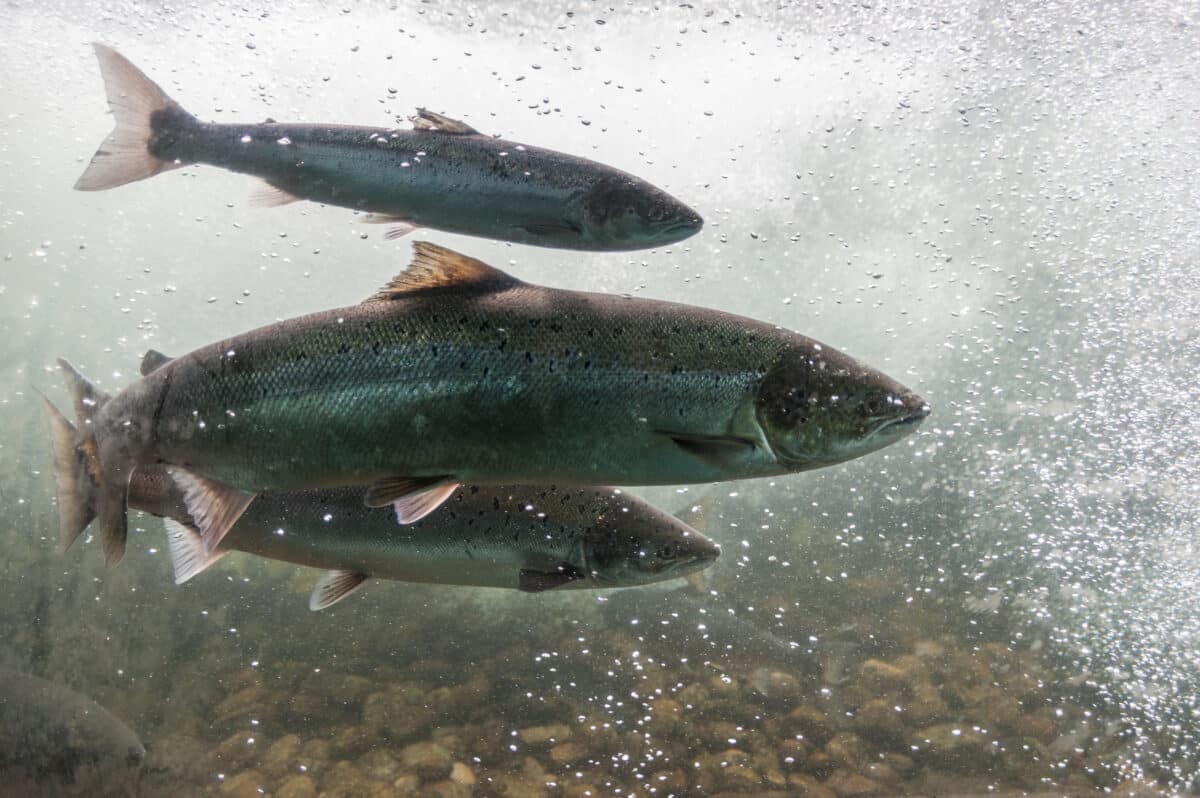
Vísindagreinin „Torula yeast in the diet of Atlantic salmon Salmo salar and the impact on growth performance and gut microbiome.“ var birt af vísindatímaritinu Scientific Reports nú á dögunum, sem gefið er út af Nature. Rannsökuð voru áhrif Torula gersveppamjöls á vaxtarafköst og þarmaörverur eldislaxa, þar sem hefðbundnum próteinum í fóðri var skipt út fyrir gersveppamjöl. Niðurstöðurnar kunna að koma á óvart.
Með örum vexti laxeldis eykst þörfin á að finna og þróa viðeigandi staðgengil fyrir hefðbundna próteingjafa í fóðri. Torula gersveppamjöl (Candida utilis) hefur verið skilgreint sem nýprótein (e. Alternative Protein) sem getur komið í stað hefðbundins próteins í fóðri. Hægt er að rækta gersveppinn á sjálfbæran hátt. Í þessari rannsókn voru skoðuð áhrif gersveppamjöls á vaxtarafköst og þarmaörverur í ferskvatns Atlantshafslöxum. Prófað var fóður sem innihélt prótein úr sjávarfangi, t.d. fiskimjöl, sem og blandað sjávar- og plöntuprótein þar sem hefðbundnum próteinum var skipt út fyrir aukið magn af gersveppamjöli (0%, 10%, 20%).
Þessi rannsókn sýndi að á vaxtarstigi laxa í ferskvatni, getur gersveppamjöl að hluta komið í stað hefðbundinna próteina í samsettu fóðri, en að ákjósanlegasta magn inntöku er háð heildarsamsetningu fóðursins og tegundum próteina sem verið er að skipta út. Í fóðrinu sem innihélt prótein úr sjávarfangi leiddi þessi rannsókn í ljós að 20% gersveppamjöl má setja í fóðrið án þess að breyta vaxtarafköstum og með hugsanlegum ávinningi fyrir örverusamfélagið í þörmum eins og aukningu á sumum mjólkursýrubakteríum.
Til samanburðar, í fóðrinu sem sameinar prótein úr sjávarfangi og plöntuprótein, styður 10% innihald af gersveppamjöli betri vaxtarafköst en hefðbundin prótein. Við hærra inntökugildi, 20%, var enginn ávinningur af vexti og hugsanlega skaðlegar breytingar á örverum í þörmum, svo sem fækkun mjólkursýrugerla og aukið magn baktería sem tengist hægari vexti í öðrum tegundum laxfiska.
Kynntu þér nánar þessar áhugaverðu niðurstöður og lestu vísindagreinina í heild sinni hér
Birgir Örn Smárason fagstjóri hjá Matís og Sigurlaug Skírnisdóttir verkefnastjóri hjá Matís, eru í hópi höfunda greinarinnar, fyrir nánari upplýsingar er hægt að ná í þau í eftirfarandi netföng birgir@matis.is og sigurlaug.skirnisdottir@matis.is
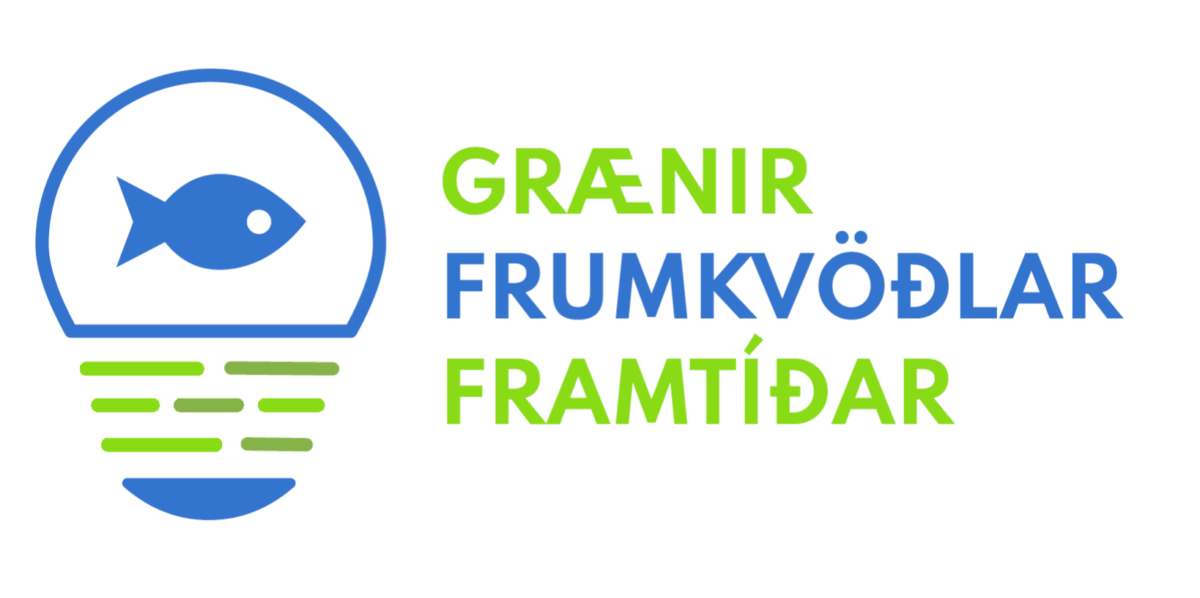
Grænir frumkvöðlar framtíðar (GFF) er fræðsluverkefni hjá Matís sem hóf göngu sína í júní 2021. Hlutverk verkefnisins er að fræða íslenska grunnskólanemendur um loftslags- og umhverfismál, og er verkefnið styrkt af Loftslagssjóði. Katrín Hulda Gunnarsdóttir, sérfræðingur hjá Matís hefur unnið að verkefninu ásamt Justine Vanhalst verkefnastjóra hjá Matís. Katrín deilir hér með okkur ferðalagi verkefnisins frá upphafi.
„Það var ánægjulegt að sjá hve áhugasamir og í raun vel að sér krakkarnir voru um áhrif loftslagsbreytinga. Það varð fljótlega ljóst að þetta er málefni sem brennur á þeim og þau eru mjög meðvituð um þá umræðu sem er að eiga sér stað í þjóðfélaginu um þessar mundir.“
Afhverju Grænir frumkvöðlar framtíðar?
„Ég var nýbúin að klára kennaranám þar sem ég hafði lært ýmis hugtök eins og lausnaleitarnám, nemendamiðað nám og leikjavæðing. Þegar ég sá auglýst starf við að vinna í GFF þá fannst mér það henta fullkomlega. Það bæði passaði vel að þeirri hugmyndafræði sem ég vildi tileinka mér sem kennari, tók á málefnum sem mér þykja mikilvæg og myndi gefa mér reynslu í að búa til námsefni. Ég sótti því um og hef verið hér síðan.“ segir Katrín Hulda.
Ekki þarf að leita langt yfir skammt til að hafa áhrif
„Markmið GFF er að vekja áhuga og efla þekkingu grunnskólabarna á loftslags- og umhverfismálum, nýsköpun og sjálfbærri auðlindanýtingu í þeim tilgangi að virkja þau til baráttunnar gegn loftslagsvánni og hvetja þau til grænnar nýsköpunar.“
„Þetta var gert með því að veita nýstárlega og áhugaverða fræðslu og virkja þau í hugmyndavinnu og nýsköpun í samvinnu við fyrirtæki í heimabyggð með sérstaka áherslu á umhverfisáhrif og auðlindanotkun. Með því var ætlunin að efla tengsl milli aðila innan heimabyggðar nemenda og sýna þeim að oft þarf ekki að leita langt yfir skammt til að geta haft áhrif.“
„Með nýstárlegri fræðslu var aðallega verið að hugsa um að gera þetta spennandi, áhrifamikið og valdeflandi fyrir krakkana. Það hefur svo þau áhrif að minnka loftslagskvíða. Til þess að berjast gegn loftslagskvíða meðal barna og ungmenna hefur m.a. verið mælt með því að segja þeim satt, gefa erfiðum tilfinningum rými og leyfa þeim að taka þátt í baráttunni. Höfundar námsefnis GFF höfðu þetta í huga við sín skrif. “ útskýrir Katrín Hulda.
Áskoranir í kjölfar Covid 19 voru leystar með útsjónarsemi
„Markmiðunum var náð og gekk verkefnið betur en við þorðum að vona. Auðvitað breyttist skipulagið aðeins vegna Covid-19 faraldursins, en skólarnir voru ótrúlega útsjónarsamir í að redda málunum. Sem dæmi um það má nefna að á Sauðárkróki var ekki hægt að heimsækja fyrirtækin vegna heimsóknabanns, vegna Covid fjöldatakmarkana. Þess í stað fengu nemendur heimsóknir frá fyrirtækjunum, þar sem sagt var frá starfsemi þeirra. Það voru kynningar, myndbönd og ýmislegt fleira og þótti takast mjög vel til.“
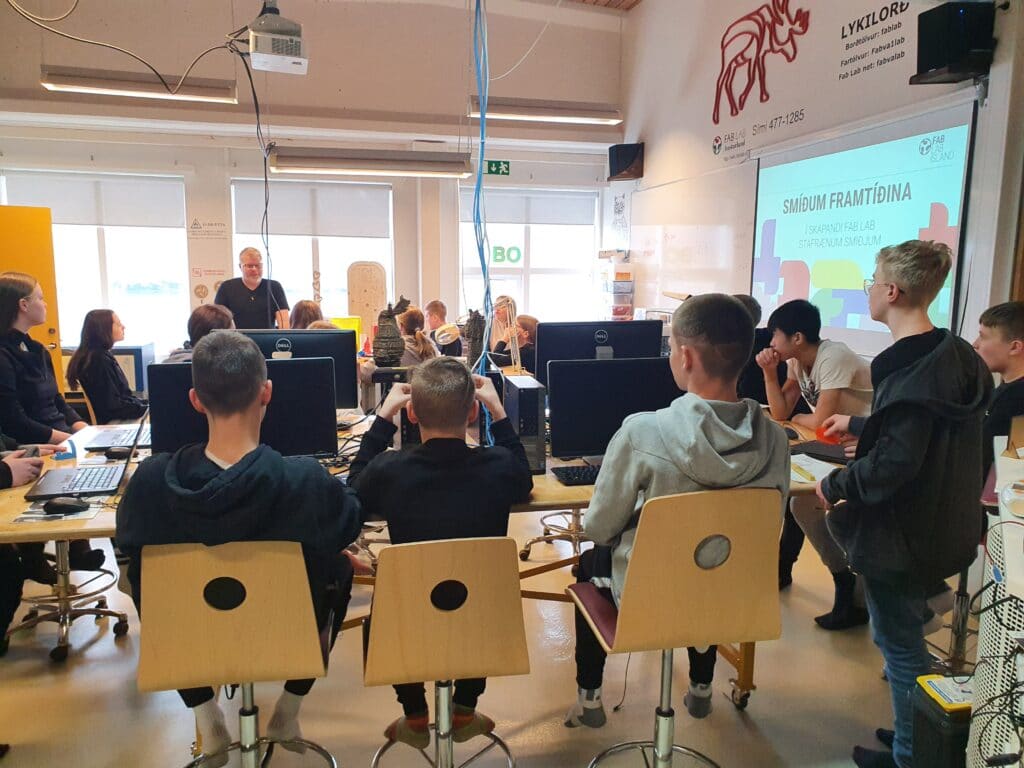
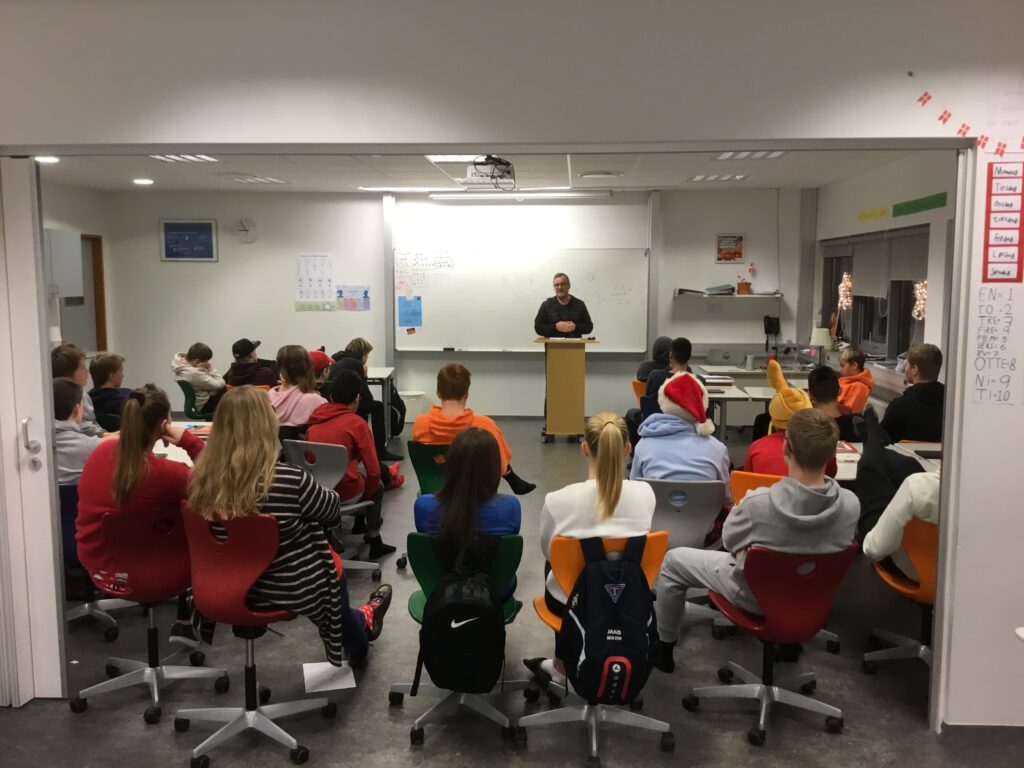
„Endurgjöf frá kennurum og öðrum þátttakendum kom mjög vel út, og var mjög dýrmæt við að betrumbæta verkefnið fyrir næstu umferð. Það má líka nefna að mikill skortur er á námsefni um loftslags- og umhverfismál fyrir þennan aldurshóp og því ákveðið skarð sem verkefnið fyllir upp í.“ segir Katrín Hulda.
Kom eitthvað nýtt eða jafnvel óvænt í ljós?
„Það var skemmtilegt að sjá hversu hæfir krakkarnir eru í nýsköpun. Ekki nóg með að þeir koma með stórsnjallar hugmyndir heldur sýndu þeir vönduð vinnubrögð og afrekuðu margt á afar stuttum tíma þegar MAKEathonin áttu sér stað. MAKEathon er nýsköpunarkeppni þar sem keppst er um að útbúa bestu lausnina á tilteknu vandamáli. Í okkar tilfelli fóru keppnirnar fram yfir tvo daga og gerðu krakkarnir frumgerðir, líkön eða veggspjöld af lausnum sínum á umhverfisvandamálum.
Það var ánægjulegt að sjá hve áhugasamir og í raun vel að sér krakkarnir voru um áhrif loftslagsbreytinga. Það varð fljótlega ljóst að þetta er málefni sem brennur á þeim og þau eru mjög meðvituð um þá umræðu sem er að eiga sér stað í þjóðfélaginu um þessar mundir. Þar að auki ríkti mikill baráttuvilji meðal þeirra en þeim finnst þetta vera stærsta vandamálið sem heimsbyggðin stendur frammi fyrir.“ segir Katrín Hulda.
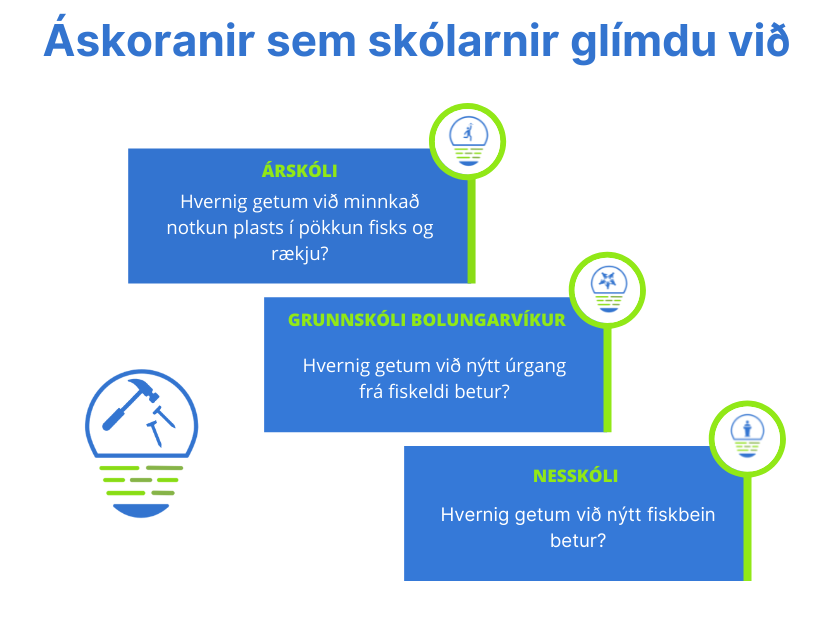
„Hægt var að staðfæra verkefnin eftir þörfum hvers og eins skóla. Kennararnir tóku verkefnin og gerðu þau að sínum eigin, til dæmis tengdu kennarar í Grunnskóla Bolungarvíkur námsefnið við sögu Bolungarvíkur og kennarar á Sauðárkróki nýttu tækifærið og notuðu eina tilraunina til að kenna nemendum sínum skýrslugerð.“
„Það var líka flott að sjá hve valdeflandi MAKEathonið var fyrir nemendur. Það að fá tækifæri til að glíma við „alvöru vandamál“, þ.e. sömu vandamál og fullorðna fólkið í þeirra nærumhverfi glímir við, virtist gefa þeim nýjar forsendur og metnað. Það skipti þau miklu máli að þetta væri ekki bara eitthvað skólabókadæmi sem væri svo stungið ofan í skúffu og aldrei gert neitt meira með.“
Fyrsta ár verkefnisins lauk með glæsibrag og áhrifin leyna sér ekki
„Fyrsta ári verkefnisins, af vonandi mörgum, lauk í vor með glæsibrag. Landskeppni MAKEathons, nýsköpunarkeppni GFF var haldin og úrslitin kynnt í Nýsköpunarvikunni. Allir þátttakendur voru hæstánægðir og virtist mikill vilji fyrir því að halda verkefninu áfram.
Áhrifin hafa fyrst og fremst verið á nemendurna. Þeir hafa lært mikið, bæði fræðilega, þ.e. um loftslagsbreytingar og áhrif þeirra, en líka praktískt, þ.e. vinnubrögð. Aukinn skilningur á eðli loftslagsbreytingar og áhrifum þeirra m.a. á þeirra nærumhverfi hefur náðst. Sjónarhorn krakkanna á heimabæ sinn breyttist fyrir vikið, sem og á þau fyrirtæki sem starfa þar. Þau lærðu að sjá tækifæri í sínu nærumhverfi. Þar komu FabLab smiðjurnar og Djúpið Frumkvöðlasetur sterk inn, en þeirra sérþekking er m.a. að kenna krökkum nýsköpun og frumkvöðlastarfsemi.
Kennararnir hafa einnig fengið ný vopn í kennslufræði vopnabúrið sitt, bæði hvað varðar fræðilega þekkingu en líka nýjar kennsluaðferðir. Vonandi munu þessar aðferðir nýtast þeim áfram, hvort sem þeir kenni umhverfisfræði eða einhverjar aðrar greinar. Svo má ekki gleyma þeim áhrifum sem verkefnið hefur haft á okkur sjálfar. Við erum fullar innblásturs og viljum gjarnan taka nemendurna, og sköpunargleði þeirra, okkur til fyrirmyndar.“ segir Katrín Hulda.
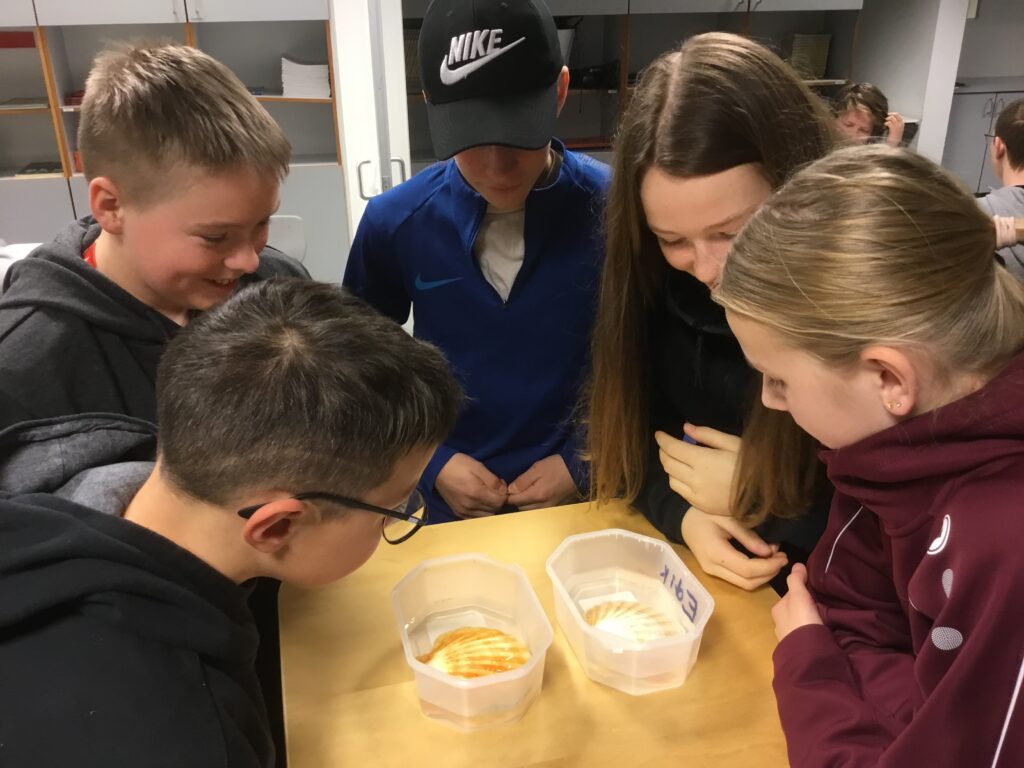

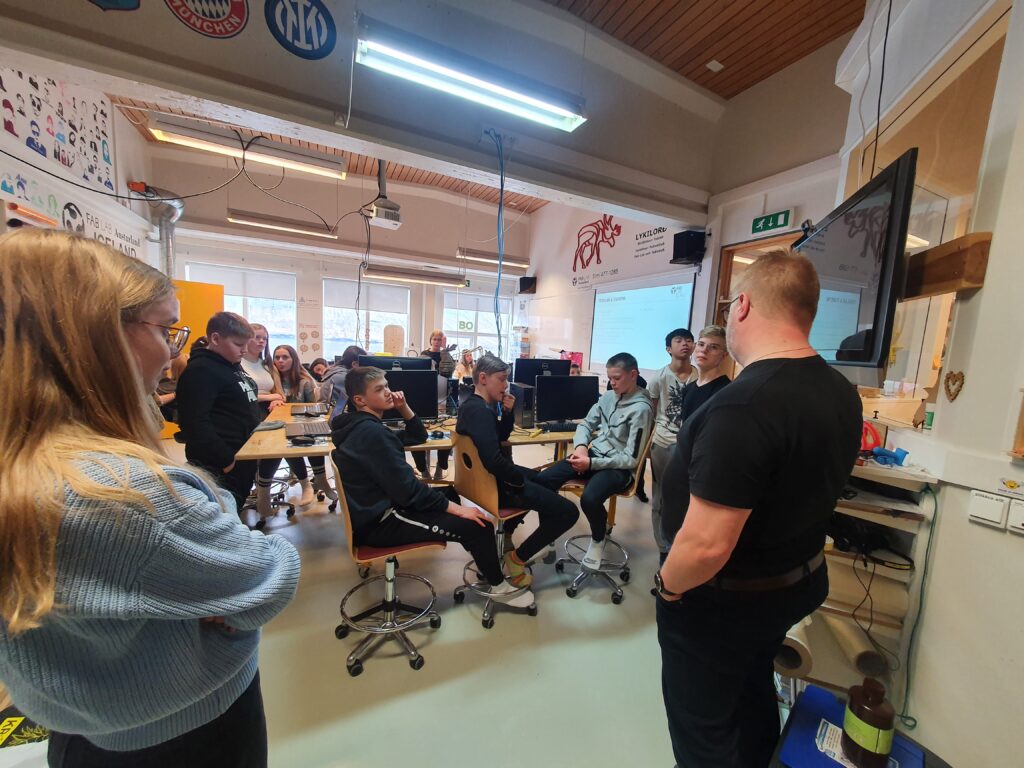
Hver eru næstu skref?
„Námsefnið sjálft verður gert aðgengilegt á netinu eins og samið var um. Það væri þó gaman að geta gefið það almennilega út, þá með myndskreytingum og fallegri framsetningu. Ætlunin er að sækja um styrk fyrir slíku.“
„Hvað varðar næsta skólaár þá er búið að opna fyrir skráningu skóla sem vilja taka þátt. Bæði elstu bekkir grunnskóla og framhaldsskólar geta tekið þátt. Hlutverk Matís er að vera þeim innan handar, en námsefnið er allt saman til og því ætti ekki að þurfa mikil afskipti þar til að MAKEathonum kæmi. Opnað hefur verið fyrir skráningu og lýkur henni 1. september. Áhugasamir fá stutta google-könnun sem þeir fylla út.“
Þeir sem vilja kynna sér verkefnið enn fremur eða nálgast kennsluefni er bent á heimasíðu verkefnisins: https://graenirfrumkvodlar.com/. Verkefnið heldur einnig úti instagram síðu með ýmsum fróðleik og myndum: https://www.instagram.com/gff_matis/.
Sérstakar þakkir til samstarfsaðila: Stefán Þór Eysteinsson hjá Matís, Gunnar Þórðarson hjá Matís, Ragnhildur Friðriksdóttir fyrrum starfsmaður Matís, Árskóli Sauðárkróki, Nesskóli Neskaupstað, Grunnskóli Bolungarvíkur, Djúpið Frumkvöðlasetur Bolungarvík (Gunnar Ólafsson), FabLab Ísafjörður, FabLab Neskaupstaður, FabLab Sauðárkrókur, N4 Sjónvarpsstöð, Cambridge University. Dögun rækjuvinnsla, FISK Seafood, ArcticFish og Eskja.
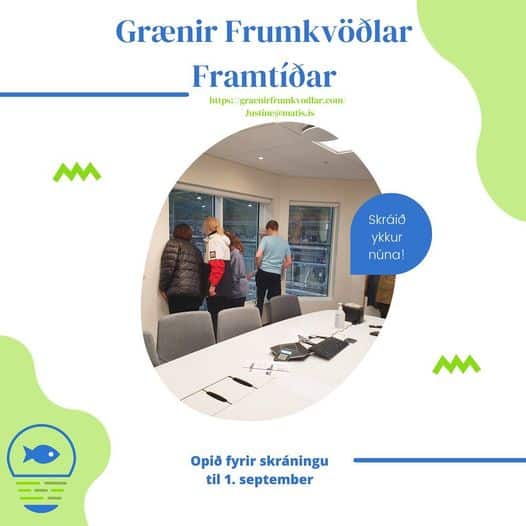
Skráning er hafin
Opnað hefur verið fyrir skráningu í Græna Frumkvöðla Framtíðar fyrir næsta skólaár. Verkefnið hentar elstu bekkjum grunnskóla og grunnáföngum framhaldsskóla. Fyrir frekari upplýsingar geta áhugasamir haft samband við verkefnastjóra verkefnisins, Justine Vanhalst í netfangið Justine@matis.is. Skráning fer fram með því að smella á hnappinn hér að neðan:
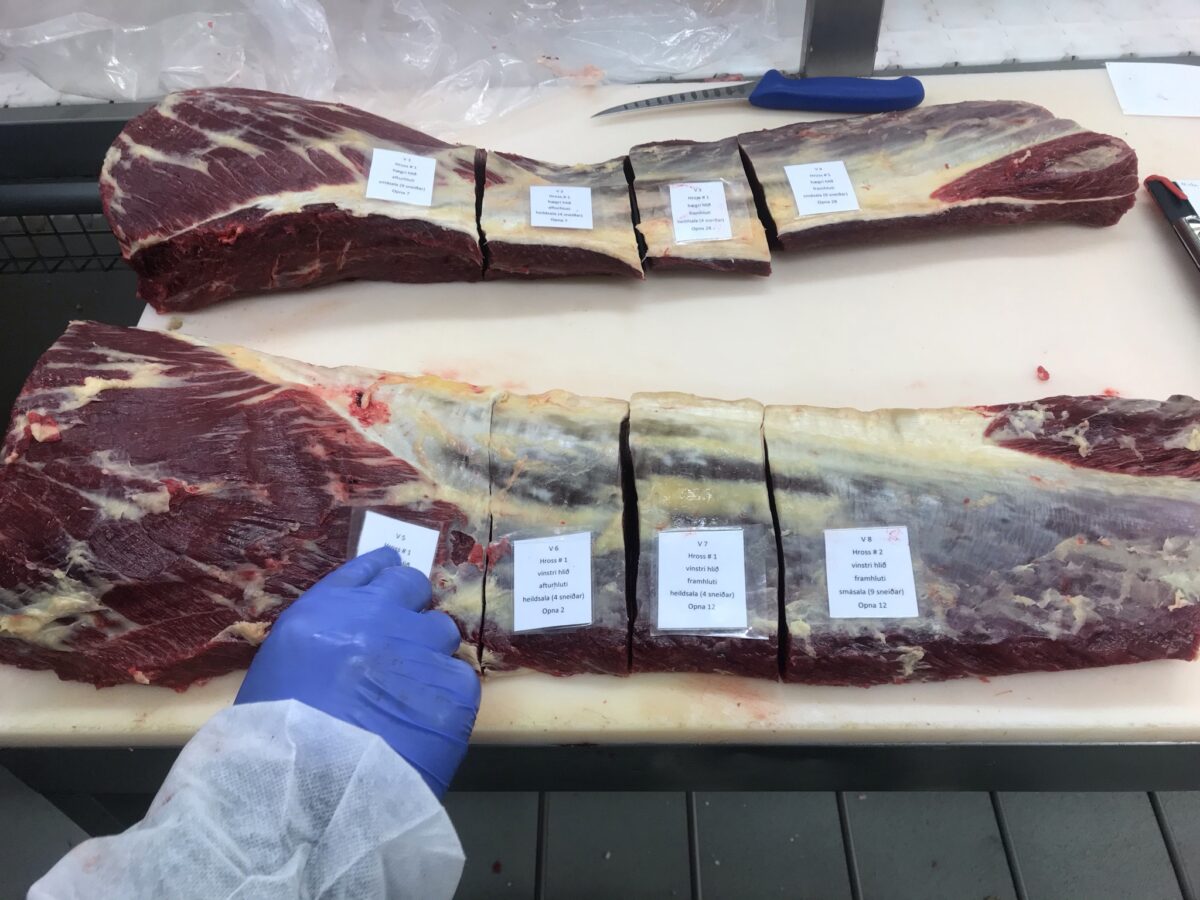
Hrossakjöt er takmörkuð auðlind og mikil gæðavara. Liggja hér tækifæri í vöruþróun og markaðsetningu sem ekki er verið að nýta?
Í þessum þætti heyrum við í Evu Margréti Jónudóttur sem er sérfræðingur hjá Matís, en hún hefur gert fjölbreyttar rannsóknir á hrossakjöti. Eva hefur meðal annars kannað viðhorf og kauphegðun íslenskra neytanda og rannsakað kjötgæði í folaldakjöti. Eva segir skemmtilega frá niðurstöðum þeirra rannsókna og það er einstaklega áhugavert að heyra hana greina frá niðurstöðum gæða og geymsluþols hrossakjöts.
Hlustaðu á þáttinn í heild sinni hér að neðan:
Þáttastjórnandi er Ísey Dísa Hávarsdóttir

Streita laxfiska í eldi getur skipt miklu máli varðandi velferð, vöxt og viðgang þeirra, og getur einnig haft áhrif á gæði og geymsluþol afurða. Helsta ástæða laxadauða í sjóeldi er meðhöndlun gegn laxalús, sem getur dregið úr viðnámsþrótti fiska gegn sýkingum og kulda, ásamt því að draga úr vexti. Laxalúsin kostar norrænt laxeldi um 140 milljarða króna á ári og er því risavaxið vandamál fyrir atvinnugreinina.
Helsta ástæða neikvæðra áhrifa á meðhöndlun gegn lús er slæm meðferð við dælingu á laxinum. Mest er notast við vakúmdælur, sem valda fiskinum streitu og nokkrum áföllum; en við dælinguna er loftrými loftæmt sem dregur fiskinn upp í tank, sem síðan er skotið á þrýstilofti til að ýta honum á þann stað sem honum er ætlað að fara á. Þetta er gert bæði við lúsameðhöndlun og eins þegar fiski er dælt til slátrunar. Það getur tekið fisk langan tíma að jafna sig eftir meðhöndlunina og byrja að taka fóður aftur, og eins geta áföll fyrir slátrun valdið streitu sem rýrir gæði afurða.
Í ljósi þessa hafa framleiðendur dælubúnaða verið að leita nýrra leiða við dælingu laxfiska og hefur íslenska fyrirtækið Skaginn 3X verið að þróa svokallaða spíraldælu (Archimedesar dælu) sem lausn á þessu vandamáli. Dælan hefur hlotið nafnið ValuePump. Á haustmánuðum 2020 veitti Matvælasjóður fyrirtækinu Skaginn 3X, ásamt samstarfsaðilum, styrk til að þróa, smíða og prófa frumgerð af ValuePump. Frumgerðin var tilbúin til prófana snemma árs 2022 og voru þá gerðar samanburðarmælingar á virkni ValuePump og hefðbundinnar vakúmdælu, sem í dag er notuð við dælingu á lifandi laxi til slátrunar og við meðhöndlun við og í kvíum. Við samanburðarmælingarnar var notast við DST nema frá Stjörnu-Odda sem skrá hitastig og hjartslátt í fiski, auk þess sem streituhormónið Kortisól var mælt í blóði. Samanburðartilraunirnar fóru fram í aðstöðu Hafrannsóknarstofnunnar á Reykjanesi undir stjórn sérfræðinga stofnunarinnar, Stjörnu-Odda og Matís.


Niðurstöður samanburðartilrauna sýndu marktækan mun á milli hópa í kjölfar dælingar. Hjartsláttur hækkaði mikið við dælingu en ValuePump hópurinn var fljótari að jafna sig og ná aftur grunngildi. Dæling með vakúmdælu hafði mun meiri langvarandi streituáhrif en tilraun með hámarksáreiti þar sem fiskurinn spriklaði á þurru. Mikill sjónrænn munur var einnig á hópunum eftir dælutegundum, þar sem fiskar sem dælt var með vakúmdælu komu oft slasaðir eða jafnvel dauðir úr dælunni, syntu á hlið eða á hvolfi klukkutímum eftir dælingu. Fiskur sem dælt var með ValuePump varð hins vegar ekki fyrir neinu sjáanlegu hnjaski við dælinguna og virtist vel á sig komin að henni lokinni.
Niðurstöður samanburðartilraunanna verða að teljast mjög jákvæðar, þar sem þær benda til þess að ValuePump geti dregið verulega úr streitu laxfiska við meðhöndlun. Gæti því þessi íslenska nýsköpun haft viðverandi áhrif á velferð og arðsemi í laxeldi.
Þátttakendur verkefnisins vilja þakka Matvælasjóð fyrir að styrkja verkefnið.

Skýrsluna í heild sinni er hægt að nálgast hér
Frekari upplýsingar veitir Gunnar Þórðarson gunnar@matis.is
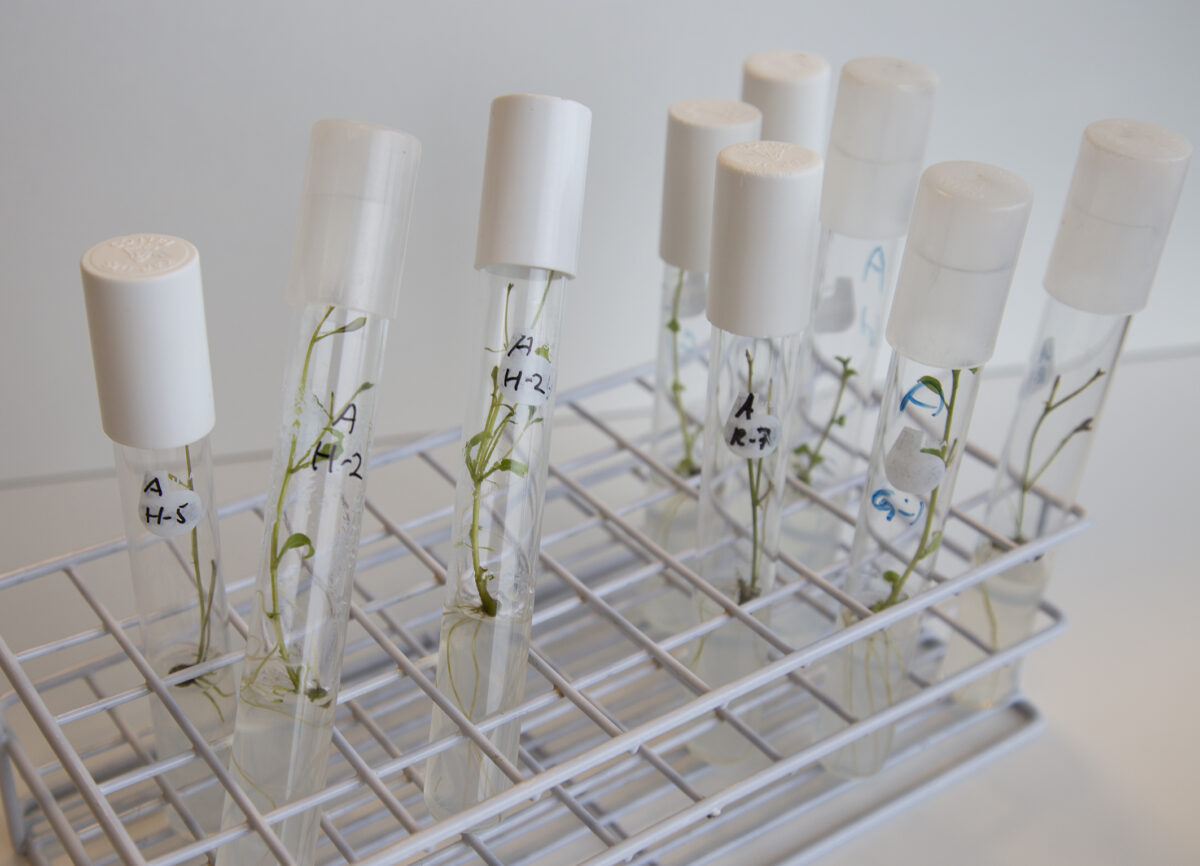
Í desember 2021 gerðu Matís og Bændasamtök Íslands með sér samkomulag um vefjaræktun á stofnútsæði kartaflna og er vinna við verkefnið hafin hjá Matís. Í síðasta tölublaði Bændablaðsins birtist umfjöllun um verkefnið þar sem fjallað er um samkomulagið og helstu verkþætti.
Tilgangurinn með vefjaræktun á kartöflum er að tryggja að íslenskir bændur eigi áfram aðgengi að heilbrigðu útsæði af íslensku yrkjunum fjórum: Premier, Gullauga, Rauðum íslenskum og Helgu. Tilgangur stofnræktunar er að stuðla að framleiðslu á stofnútsæði sem er laust við veirusjúkdóma. Veirur komast auðveldlega milli móðurkartafla og afkvæma og því er vefjaræktun eina leiðin til að viðhalda veirufríu útsæði. Veirur eru mjög skaðlegar fyrir bændur en veirusmitað útsæði gefur allt að þriðjungi minni uppskeru. Sigurgeir Ólafsson, fyrrum sérfræðingur á RALA, kom upp veirufríum stofnum af íslensku afbrigðunum. Markmið þessa verkefnis er viðhalda þessum stofnum. Í samstarfsverkefni Bændasamtakanna og Matís kemur Matís til með að sjá um framkvæmd á verkþáttum sem snúa að vefjaræktuninni sjálfri.
Í Bændablaðinu er haft eftir Axel Snæland, formanni deildar garðyrkjubænda innan Bændasamtaka Íslands:
„Deild garðyrkjubænda innan Bændasamtakanna stóð fyrir gerð samningsins við Matís, sem felur í sér vefjaræktunarhluta stofnræktunar útsæðiskartaflna. Verkefni Matís felur í sér að skila af sér vefjaræktuðum útsæðiskartöflum, Premier, Gullauga, Helgu og Rauðum íslenskum, sem eru lausar við veirur og sjúkdóma, eins og til dæmis kláða og hringrot. Auk þess sem kartöflurnar eru valdar með tilliti til útlits. […] Því miður er það svo að víða um heim eru sjúkdómar í kartöflum landlægir og margir þeirra sjúkdóma geta borist hingað til lands og valdið miklum skaða ef við gætum þess ekki að hafa vaðið fyrir neðan okkur.“
Verkefninu miðar vel og um þessar mundir eru kartöfluplöntur, ræktaðar af spírum, í glerflöskum við sérstakar stýrðar aðstæður í vefjaræktunarklefa í húsakynnum Matís eins og sjá má á meðfylgjandi myndum.
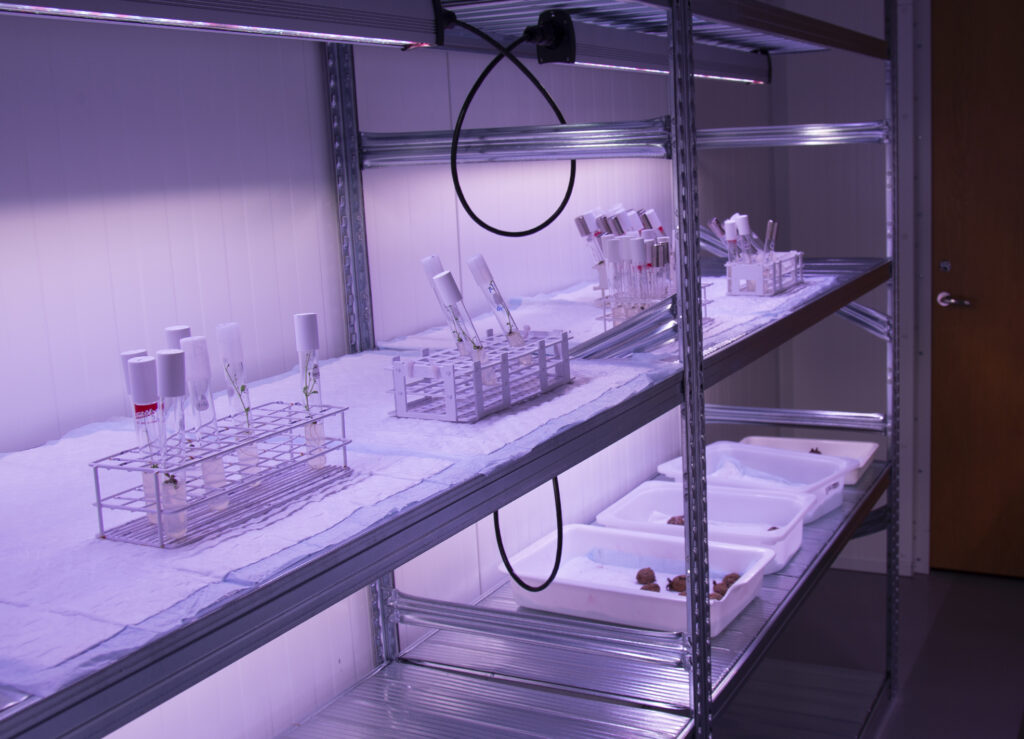
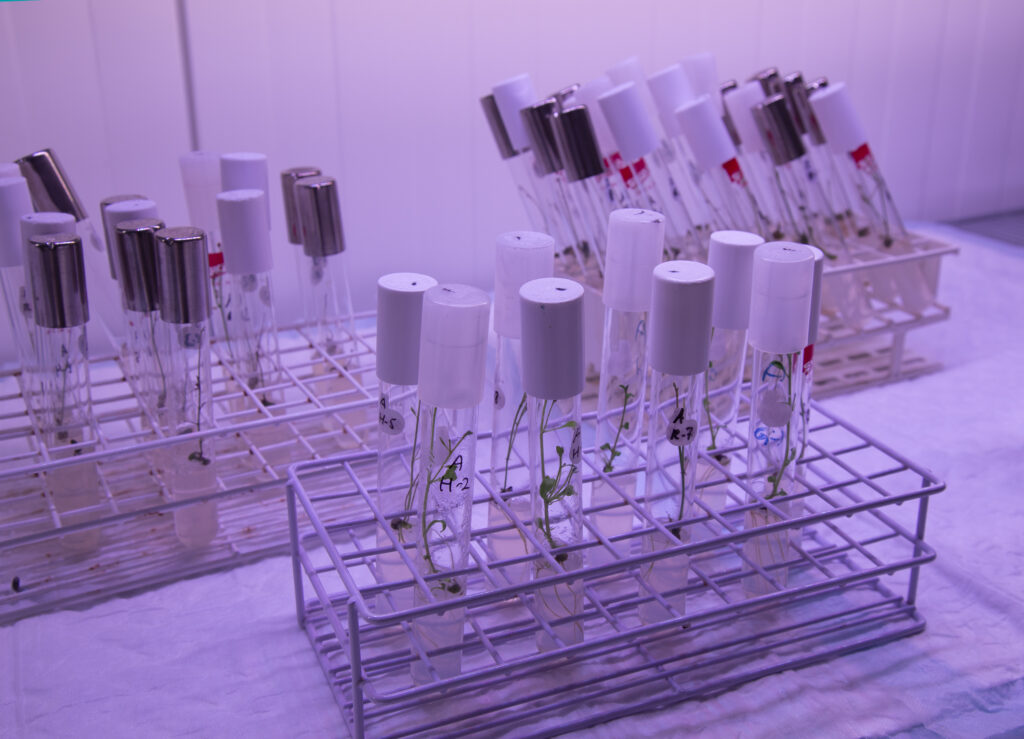
Eftir frekari rannsóknavinnu verður svo hægt að skila litlum plöntum í ræktunarhlaupi í áframræktun til stofnkartöfluræktenda til gróðurhúsaræktunar í mold næsta vor ef allt gengur eftir.
Greinina má lesa í heild sinni í Bændablaðinu hér: Stofnræktun á útsæðiskartöflum
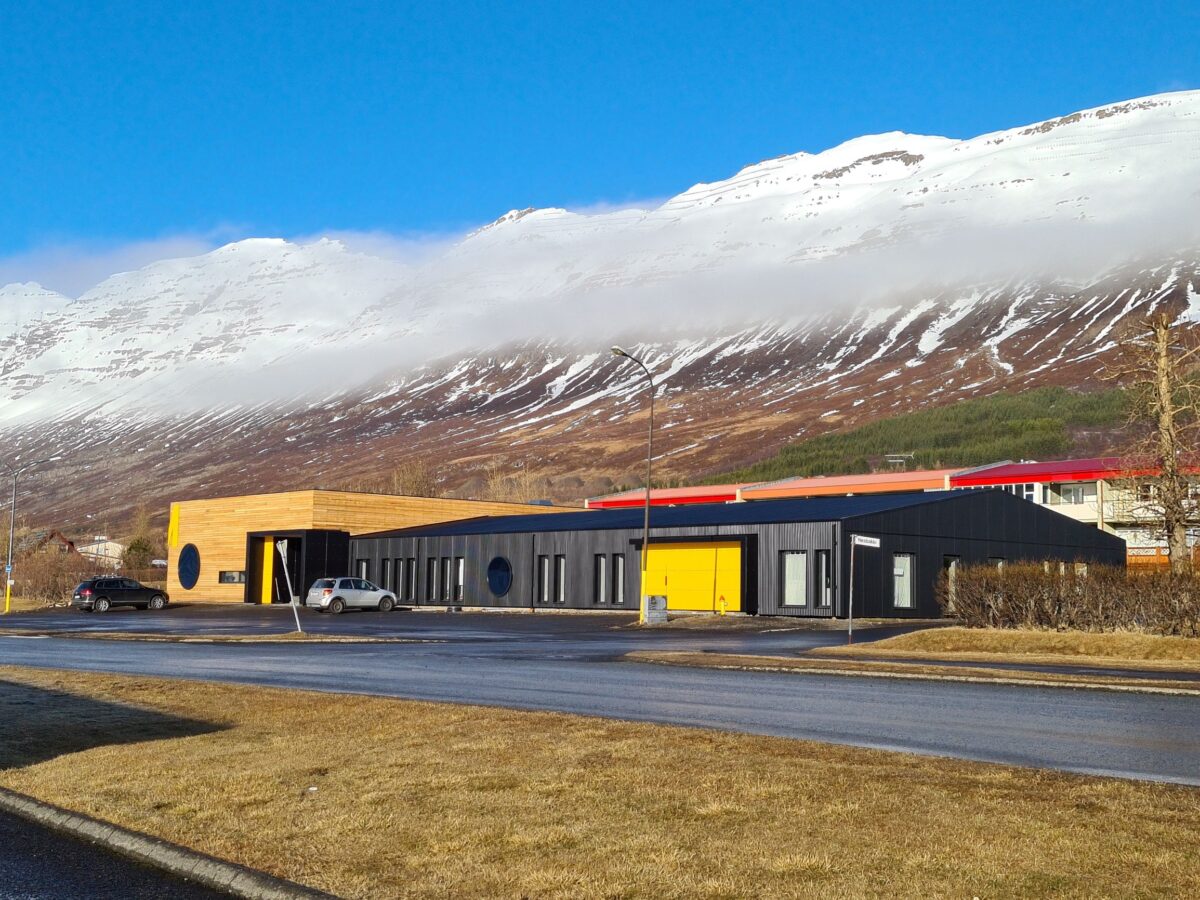
Hjá Matís er laust til umsóknar starf sérfræðings. Við leitum að sjálfstæðum og metnaðarfullum einstaklingi til að starfa í öflugu teymi.
Helstu verkefni og ábyrgð:
- Efnamælingar og viðhald tækja
- Viðhald mæliaðferða og verkefna í faggiltu umhverfi fyrir iðnað og rannsóknaverkefni
- Upplýsingamiðlun og samskipti við viðskiptavini
- Innkaup og samskipti við birgja
Menntunar- og hæfniskröfur
- BSc gráða í efnafræði, efnaverkfræði, lífefnafræði eða sambærilegu námi
- Góð samstarfshæfni og sveigjanleiki í samskiptum
- Æskilegt er að viðkomandi hafi unnið við efnamælingar og hafi reynslu af viðhaldi tækja.
- Frumkvæði, áreiðanleiki og metnaður
Starfshlutfall er 100% og er starfið staðsett í Neskaupstað
Með vísan í jafnréttisstefnu Matís eru öll kyn hvött til að sækja um. Umsóknum þarf að fylgja ítarleg starfsferilskrá og kynningarbréf þar sem gerð er grein fyrir hæfni umsækjanda í viðkomandi starf. Einnig þarf að fylgja nafn og símanúmer eða tölvupóstfang hjá tveimur meðmælendum sem geta staðfest hæfni umsækjanda.
Umsóknarfrestur er til 07.07.22
Nánari upplýsingar um starfið veitir Natasa Desnica, natasa@matis.is
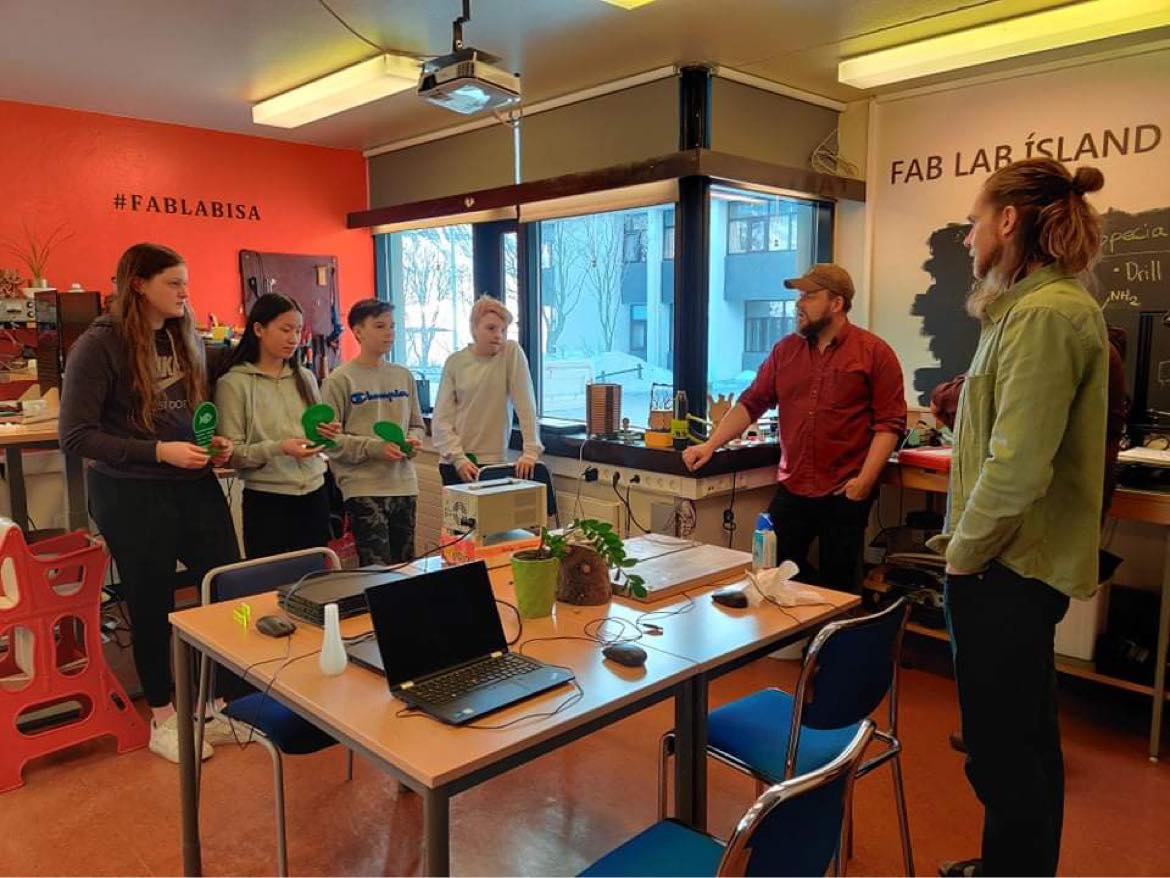
Í lok maí fór fram Landskeppni MAKEathons, nýsköpunarkeppni Grænna Frumkvöðla Framtíðar. Þar kepptu skólarnir þrír, Nesskóli, Grunnskóli Bolungarvíkur og Árskóli, til úrslita.
Hver skóli sendi inn myndband þar sem þeir útskýrðu sínar lausnir á umhverfisáskorunum í sinni heimabyggð. Keppnin var hnífjöfn en á endanum var það Grunnskóli Bolungarvíkur sem bar sigur úr býtum. Þeim innan handar voru Hildur Ágústsdóttir kennari og Gunnar Ólafsson frá Djúpinu frumkvöðlasetri.
Grunnskóli Bolungarvíkur glímdi við áskorunina:
„Hvernig er hægt að nýta úrgang frá fiskeldi betur “
og lausnin sem vann bar yfirskriftina: „Að nýta úrgang frá fiskeldi á sjálfbæran hátt“
Hér er fyrir neðan má lesa endurgjöfina sem sigurliðið fékk frá dómnefndinni:
“Þið eruð hugvitssöm og lausnamiðuð. Þið komuð auga á umhverfisvandamál sem skapast vegna fiskeldis í sjó og leituðuð lausna. Það var frábært að fá að sjá skítinn sem safnast hefur fyrir, en það sjónarhorn fær almenningur yfirleitt ekki. Ykkar verkefni gengur út á að breyta úrgangi og botnfalli í auðlind sem nýtist, og gæti því komið bæði náttúru og sjávarútvegsfyrirtækjum að gagni. Við hvetjum ykkur til að vinna lausnina áfram og hafa í huga mikilvægi líffræðilegs fjölbreytileika í vistkerfum í sjónum, en eldi í sjó getur skaðað hann sé ekki að gætt.“
Í dómnefnd sátu:
- Lenya Rún Taha Karim varaþingmaður Pírata og lögfræðinemi
- Margrét Hugadóttir vefstjóri og verkefnastjóri hjá Landvernd
- Þóra Valsdóttir verkefnastjóri hjá Matís
Fyrir frekari upplýsingar er bent á að hafa samband við verkefnastjóra Grænna frumkvöðla framtíðar: Justine@matis.is. Skólar sem vilja taka þátt eru sérstaklega hvattir til að hafa samband (fréttamenn geta haft samband í síma: 762 0266).
Hér er hægt að fylgjast með gangi verkefnisins:
- Heimasíðu verkefnisins: https://graenirfrumkvodlar.com/
- Instagramsíðu verkefnisins: https://www.instagram.com/gff_matis/
- #Graenirfrumkvodlar
The social-ecological change in the Arctic is accelerated by the multifaceted effects of climate change and globalization. Among other things, this means changing human-ecosystem dynamics through altered availability, co-production, and governance of ecosystem services (ES). A group of species illustrative of this change are whales, migratory species that have played an important part in the culture and subsistence of Arctic communities for millennia. This study explores the changing human-nature interactions and whale ES governance by combining ES and interactive governance theories. A multi-method approach is applied to assess qualitatively the qualitative governability of whale ES in three Arctic coastal locations: Húsavík in Iceland, Andenes in Norway, and Disko Bay in Greenland. Based on a literature review, stakeholder mapping, observations, and analysis of 54 semi-structured stakeholder interviews, the study finds that whale ES governance involves multiple actors with differing preferences and values and that much of it happens outside of formal institutions, necessitating inclusive approaches to improve it. The study reveals some whale ES governance deficiencies and potentials, such as a mismatch between governance scales and a need for more formal governance practices based on scientific research and stakeholder inputs. Governance frameworks were present for provisioning whale ES related to whaling, but they were lacking for non-consumptive whale ES, such as whale watching. Addressing these issues can help to direct marine resource management toward sustainability by making it more inclusive, adaptive, and reflective of stakeholder needs and values. This goal could be advanced by applying the governance principles that view humans as an integral part of social-ecological systems, e.g., ecosystem stewardship and ecosystem-based management.



